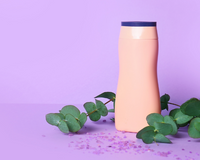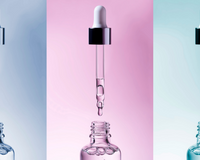Hair porosity refers to how easily your hair can absorb water and keep moisture. How to care for high porosity hair? Your hair can be categorized as high, medium, or low porosity depending on how porous it is. Water, oils, and other products can easily absorb water, oils, and other goods if you have porous high hair. On the other hand, because your hair is porous, it may not retain moisture as efficiently as it should. This page may provide the answers you're looking for if you want to learn more about highly porous hair, how to care for it, and what products to use.
A hair porosity test should be performed before purchasing any product for curly hair. This is a simple test that you can perform on your own. How to care for high porosity hair? Understanding the structure of your hair, whether it's healthy, dry, or damaged, is the first step toward correct maintenance. A strand test, also known as a float test, is the most effective approach to measure the porosity of your hair. Take a strand of clean hair and place it in a glass of water (you may also use your brushes). Hair must be clean because any product accumulation on the hair will affect the accuracy of the measurements.
What Is Hair With A High Porosity?
How to care for high porosity hair? Understanding hair porosity might help you learn more about hair structure. There are three layers to each strand of hair:
- cuticle: the topmost layer
- cortex is the middle layer of the brain.
The medulla is the innermost layer of the brain. Your hair's outermost layer is made up of tiny cuticles that can't be seen with the naked eye.
These cuticles safeguard the inner layers of your hair by limiting the amount of moisture, as well as products and chemicals, that may be absorbed. When the cuticles are too close together, moisture cannot get through. This is referred to as low porosity. When the cuticles are too far apart, the result is the opposite: Moisture is easily absorbed by the hair, but it does not stay there long enough to nourish and moisturize it. This is hair with a lot of pores.
How to care for high porosity hair? Hair with a lot of pores can be inherited, which implies it runs in your family. Hair processing and styling operations such as straightening, blow-drying, bleaching, and other chemical treatments are the most common causes. Cuticles can be damaged by these procedures, causing them to lift or break. This might cause holes between your cuticles, making your hair more porous than it would be otherwise.
What Do Porous Hair's Qualities Entail?
It's possible that your hair has a high porosity:
- looks and feels dry, curls readily, and is prone to breakage. Air dries rapidly, absorbs products quickly, and rarely looks brilliant.
- What kind of porosity are you?
- Using a dry, newly washed strand and a clean glass or bowl of water, you can simply test the porosity of your hair.
Test for porosity in the hair. Water should be poured into a clear glass or container. Apply a small amount of water to your hair. Keep an eye on how quickly it sinks.
Results: Hair with a lot of pores sinks quickly. Hair with a medium porosity will float for a while in the middle of the glass before sinking to the bottom. Hair with a low porosity floats on top for a while before sinking.
How To Take Care Of Hair With A High Porosity
The goals of care for very porous hair are to minimize and reverse cuticle damage, while also ensuring that your hair retains moisture. It's critical to utilize products with a formula designed specifically for porosity hair to help nourish, hydrate, and repair it. Here are some options for products and substances that work well with severely porous hair. How to care for high porosity hair?
Shampoo: The shampoos listed below are especially good for cleansing your hair without drying it out. No-Poo Decadence Milk Cleanser by Devacurl. This product isn't a conventional shampoo because it doesn't have the word "poo" in it. Instead, it's more like a quinoa-based hair wash that softens and moisturizes porosity hair. Elvive Total Repair 5 Repair Shampoo for Damaged Hair by L'Oréal, Paris. This protein-rich shampoo also contains conditioning chemicals and almond oil, which help to prevent frizz and condition hair. Bond Care Shampoo No. 4 by Olaplex. To prevent breakage, this shampoo is meant to keep internal moisture and strength.
Here are several conditioners that may be very beneficial for hair with a lot of pores. Neutrogena Triple Moisture is a moisturizer from Neutrogena. Deep Conditioner on a Daily Basis, Almond and olive ingredients nourish and moisturize the hair in this very hydrating conditioner. SheaMoisture Intense Moisture Conditioner with Manuka Honey and Mafura Oil. Because this product is sulfate-free, it's ideal for porosity hair. Shea butter, mafura oil, honey, and fig extract help to hydrate and strengthen hair.
Natural Silk18 Conditioner Argan oil and amino acids are used in this daily conditioner to help decrease static and frizz.
What Can You Do To Encourage Your Hair To Grow?
Breakage is common in porous hair, which can stifle hair development. The following tips, in addition to utilizing nutritious, moisturizing hair care products, will help decrease hair breakage. Deep conditioning treatments are particularly beneficial for providing moisture, nutrition, and softness to hair that is porous. At least once or twice a week, use a thorough conditioner. Heat and style treatments can damage very porous hair, so you may want to use items that can prevent your hair from further harm.
Water and oils can easily be absorbed by hair with a high porosity, but your hair will struggle to keep this moisture. This might result in dry, frizzy hair that is prone to tangling and breaking. There are, however, some products and tactics to try that can improve your hair's health and make it easier to manage and maintain. Talk to your stylist about strategies to improve your hairdo and overall health, whether your hair continues to hydrate or not.









